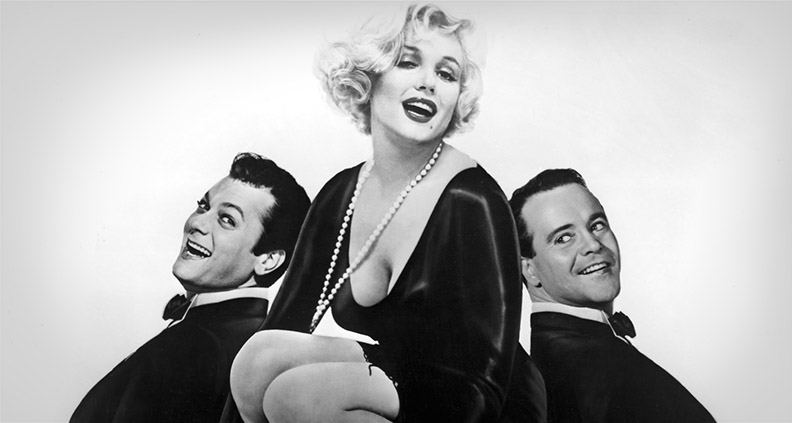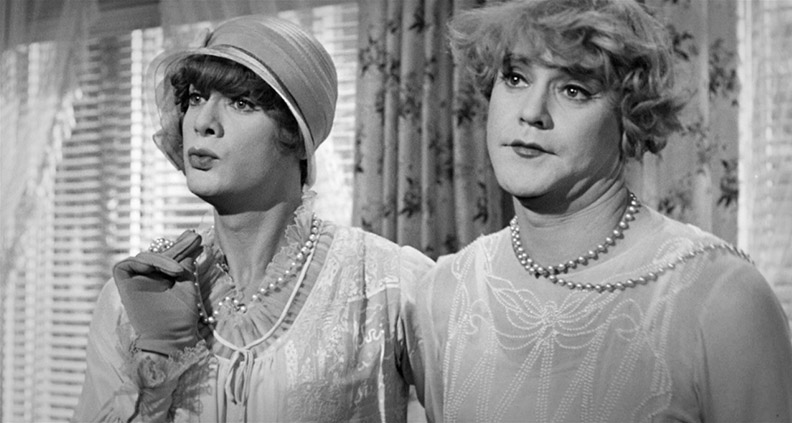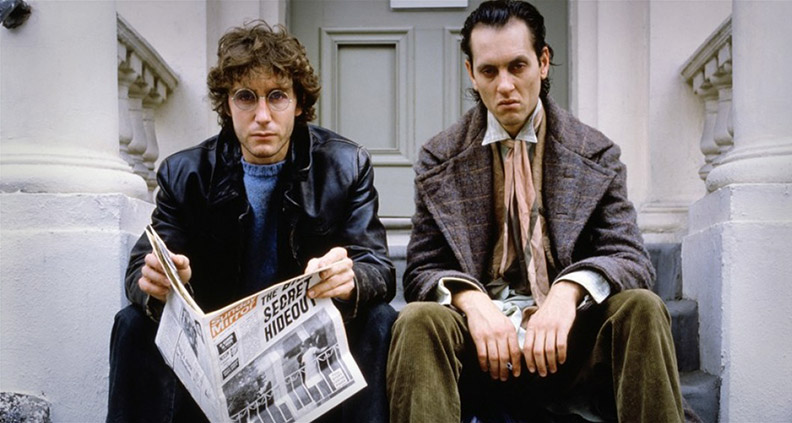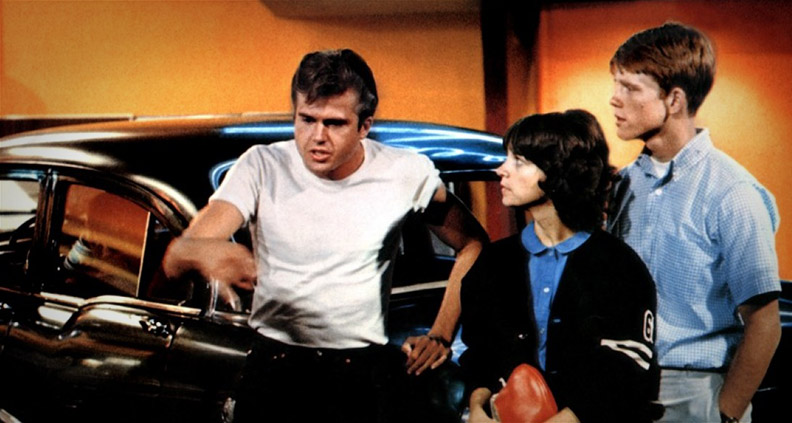What Movies Set in the Recent Past Can Teach Us About History, Cinema and Our Own Brains
Watching a movie critically requires all sorts of mental gymnastics that watching a movie simply for entertainment does not. And for me at least, the quickest way for my brain to become discombobulated is in trying to contextualize what I term “short-gap historical fiction”. Now, this is a term I literally just made up two seconds ago, so it would probably help to explain what I mean:
What I mean by “short-gap historical fiction” are older films from any previous era in film history that are themselves set only 20 or 30 years prior to their own production. Like, say, a movie from the 1950s set in the 1930s, or movie from the 1980s that takes place in the 1960s—that sort of thing. I obviously have no mental issues properly placing any sort of movie set in the distant past, like a gladiator epic set in ancient Rome or a down-the-line Shakespeare adaptation. While watching these I clearly understand the degree of artifice at work, as well as the fact that the makers of, for example, 1938’s The Adventures of Robin Hood have (more or less) the same relationship to 14th century England and we do in 2016.
But the shorter the historical gap, the more complicated a film’s relationship with is own temporal narrative setting becomes and the greater the chance that our own current, modern-day understanding of that setting may differ from that of the film’s creators. And hence: the aforementioned discombobulating effect.

Like all right-thinking movie geeks, I’m a huge fan of Billy Wilder’s 1959 drag farce Some Like It Hot. But even as a (literal) student of film history, I find that when watching the movie I often have to remind myself that Hot is set some 30 years prior to its own production. The story takes place 1929 during prohibition and the rise of the Italian mob—a key element, in fact, of the film’s plot.
If I’m not vigilantly policing my own intellect, my unfathomably lazy brain will default to a position of believing that Hot is telling a contemporaneous narrative, and that the film—despite all my knowledge of who Billy Wilder and Tony Curtis and Marilyn Monroe are and when they were alive and working—must have been made in 1929. Again, this is just my own subconscious being unmotivated, drawing the shortest possible line between what I’m being told is real on-screen and how I imagine this particular piece of entertainment came into being. My truly wretched, good-for-nothing potato-loaf of a mind simply sees that the film is in black-and-white, immediately equates this style of cinematography as being “old” and conflates the movie’s narrative with its production.

Another question short-gap historical fiction raises is: if a film’s time period is incidental to the plot, why not just set it in the “present”? Here, the answer isn’t always so clear. The prohibition-era setting in Some Like It Hot figures into the story only in the loosest possible way. The screenplay’s inciting incident revolves around the protagonist’s witnessing of 1929’s St. Valentines Day Massacre, but it’s not hard to imagine that Wilder and cowriter I.A.L. Diamond could’ve easily concocted some other reason for our heroes to be on the run, from the mob or otherwise—so why then place the movie in 1929?
It’s difficult to say exactly, but my guess is it has something to do with nostalgia, which despite today’s mania for reboots and sequels, has always been an integral part of the creative imagination. No matter if it’s 1929, 1950 or 2016 filmmakers and storytellers inevitably view the past—and, arguably, the extremely recent past especially—as a more romantic, glamorous and cinematic venue for telling tales. And if you’re an elite director like Billy Wilder was in 1958, why not go the extra mile and leverage some of that vintage glamour to make your movie seem more special, like more of a “production”?
But I don’t think I’d have the same cognitive problem if Some Like It Hot was were set during the reign of King Henry VIII, or in some sort of prehistoric scenario where Jack Lemmon fall in love under false pretenses with a wooly mammoth. But at least for me, any storyline set since the invention of film itself runs the risk being collapsed—within a roughly 20-30 year margin of error—into a de facto “present day” narrative, especially when the visual aesthetic is so superficially similar to that which would have been common during the period of time being depicted.

Another prime example of this phenomenon I like to cite when describing this particular cognitive failing is Withnail and I, Bruce Robinson’s ambling 1987 black comedy about two drunks trying to buy boots in the English countryside. Withnail is set during the late 1960s, but much of the action takes place away from swinging London in a picaresque rural village in the North that’s likely remained more or less unchanged for literally hundreds of years.
But with ‘Nail (see what I did there?) my faulty cognition goes the other way. Here, I typically make the mistake of thinking the film is set in 1987—eg, “the present” (1987) taking place as it does faraway from any sort of era-specific signifiers, save for an errant Jimi Hendrix needle-drop or two on the soundtrack. With Hot, I mistake the film’s setting for its production year. With Withnail, I mistake the film’s production year for its setting.
Other examples of short-gap historical fiction include To Kill A Mockingbird (shot in the ‘60s but set in the ‘30s), Night of the Hunter (1950s vs 1930s), American Graffiti (1973 for 1962), The To-Do List (2013 for 1993), No Country For Old Men (2007 for 1980), Fargo (1996 for 1987), The Big Lebowski (1998 for 1991) and Trainspotting (1990s for the 1980s)—each of which has their own specific, individual reasons for being set during the exact years in which they’re set, but all of which I’ve at one time or another struggled to place in their proper context.

Why does this matter, you ask? It doesn’t really, except to reveal just how young the medium of film actually is, and also how human beings tend to only evaluate time in relationship to their own lifespans. Fast-forward 300 years. Assuming the movies will in any way resemble their current form in the year 2316, the “period” nature of these short-gap historical narratives will most likely be lost completely. To a Billy Wilder fan watching Some Like It Hot from the comfort of their moon colony viewing pod in the 24th century, it won’t matter that the film was actually produced three decades after when it was set or that (for a while anyway) this distinction was important to understanding the sort of story it was trying to tell. To a viewer in 2316, the film will just seem like a document of the same basic period of human history. After all, today in 2016 we wouldn’t look at a novel published in 1759 but set in 1728 and interpret that 21-year gap as hugely meaningful. Enlightenment professors may disagree, but to the rest of us it pretty much just seems like the same thing.
So maybe I should cease trying to fight my subconscious mental impulse to delete and compress these brief temporal gaps and stop beating myself up for defaulting to a more streamlined—if incorrect—interpretation of the material I’m watching. Maybe I’m not stupid. Maybe I’m just looking at 20th century media from the perspective of a 24th century lunar colonist. Now, where’s my jetpack?
To learn more about Film Independent, subscribe to our YouTube channel or follow us on Twitter and Facebook. You can read the rest of our blog here. To learn how to become a Member of Film Independent, just click here.